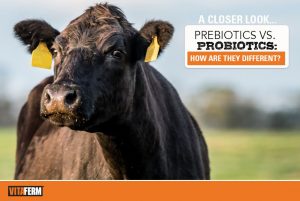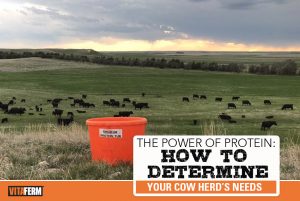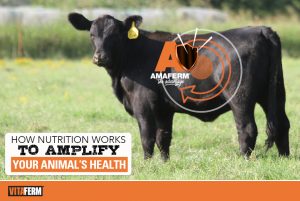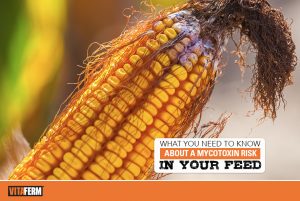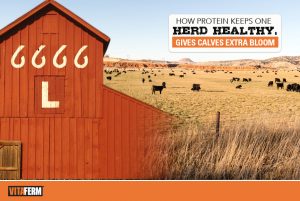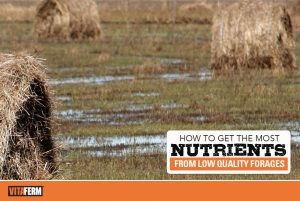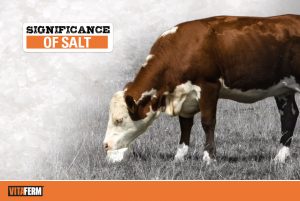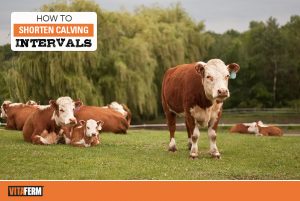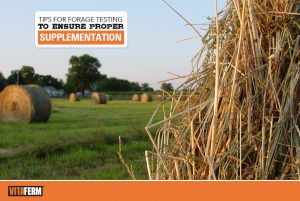Prebiotic and probiotic sound similar; in fact, with just one letter difference, you might even believe they function equally too. However, that is not the case. Both prebiotics and probiotics do play a role in the health of the bacteria found in the digestive tract. Yes, there are good bacteria in there. But they are […]
Category: Nutrition Articles
Vita Charge® Clench Launched to Assist with Scours
Our livestock can’t always tell us how they are feeling, until it’s too late. And oftentimes they “show” us they are not feeling their best through diarrhea and scours. When these symptoms occur, you want to make sure your livestock get properly treated to feel their best, so they continue eating, drinking, looking and performing […]
The Power of Protein: How to Determine Your Cow Herd’s Needs
Protein is a powerful nutrient for your cow’s digestive system and rumen to function properly. However, spending money on protein supplementation may not always be the best investment a cow-calf producer makes. You need to know when to supplement protein and how much to provide your herd to make it a wise investment in your […]
How Nutrition Works to Amplify Your Animals’ Health
Health and nutrition. To some livestock producers these terms might seem like the “chicken and egg” expression, and leave you wondering which one came first. Do you amplify your nutrition program to get your animals to perform to their highest potential? Or does a high-quality nutrition program help keep your animals healthy and therefore performing? […]
What You Need to Know About a Mycotoxin Risk in Your Feed
Due to a wet fall and delayed harvest in the Midwest, conditions have been ideal for mold growth. Therefore, mycotoxins will likely be an issue in many feeds and ingredients this year. Mycotoxins are a toxic, secondary metabolite produced by fungi/molds that result in undesirable performance when animals (or even humans for that matter) are […]
How Protein Keeps One Herd Healthy, Gives Calves Extra Bloom
In the vast plains of North Central Texas, where cows graze in pastures designed for hundreds at one time, making sure the land is fully utilized is a top priority. It is also critical for those cows to have a high-quality nutrition program in place as they spread out and graze the native grasses. The […]
How to Get the Most Nutrients from Low Quality Forages
As summer’s days get shorter and the crisp morning air starts to greet us, it is a reminder that the seasons are about to transition into fall. With that transition comes many changes for the cattle producer, including considerations of managing forages and how to feed those available forages in the coming months. Availability of […]
Significance of Salt
Both sodium and chloride, elements of salt, are essential nutrients for virtually all forms of life. Sodium and chloride are necessary for proper nervous and muscular function, body pH regulation and water retention. Sodium is involved in muscle and nerve function. Chlorine is essential for hydrochloric acid production in the abomasum and for carbon dioxide […]
How to Shorten Calving Intervals
Optimum productivity should be the goal of each cow-calf producer and that productivity begins with cows producing at least one calf every 365 days. With proper management, including a good health and nutrition program, that goal is easily attainable. Shortened calving intervals – or the time between birth of one calf and the subsequent birth […]
Tips for Forage Testing to Ensure Proper Supplementation
Some livestock producers will tell you they are forage producers and they simply raise cattle to have animals to consume the forage they produce. But it doesn’t matter if you raise hay for your cattle or cattle to eat hay, the most important thing to know is the nutrient content of the harvested forage you […]
